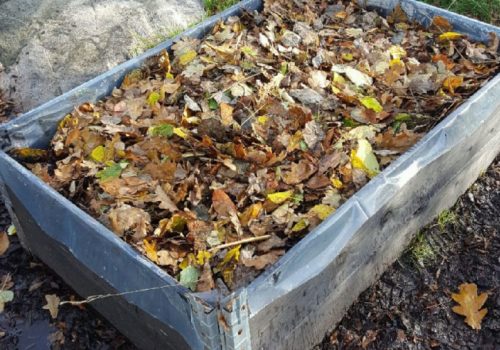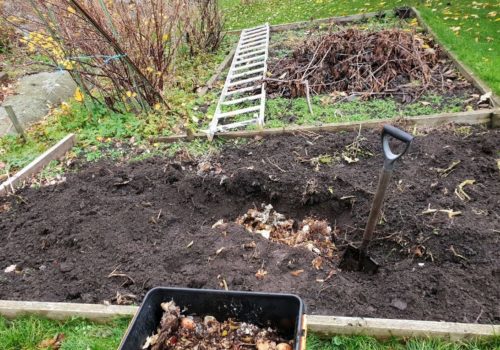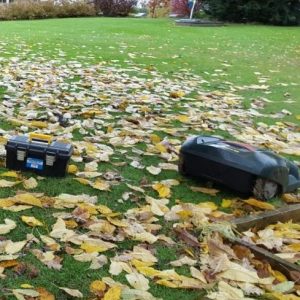5 ways to make use of your autumn leaves!
As the days turn from endless warm sunsets to shorter and frostier nights, it is impossible to ignore the slow and beautiful transition of nature, from the lush greens of Summer to the amber tones that mark the beginning of Fall. As we add a thicker blanket to our beds and maybe get out a winter hat, the trees are beginning to prepare for their winter slumber, with leaves of gold, orange and burgundy exploding with color as they catch the early Fall sunlight. Get out and enjoy the show by going for a long walk, taking advantage of the cooler weather, it is time to truly appreciate the beauty this change of seasons has to offer.
HOW TO USE AUTUMN LEAVES FOR IMPROVING YOUR GARDEN
As the leaves fall, it is important to remember that nature has the uncanny knack of taking care of itself, the falling leaves are a perfect example for the cycles of growth and how to reinvigorate our gardens soil with the plentiful nutrients the fallen leaves bring. With that in mind, here are some helpful tips to putting those leaves to work in your garden.
1) Improve soil structure
There are very few soil types that aren’t improved by adding organic materials such as leaves and grass clippings. Take advantage of the fallen leaves by repurposing them in a mixture of leaves and soil found in your flower and plants beds. The best use of this nutrient rich mixture is in areas with heavy and compact soils, areas with heavy clay content and areas with excessive drainage (high sand and gravel areas).
2) Use as cover material
It is not always possible to turn and mix the leaves in to the soil and it may be better to simply use the leaves as ground cover. You can use leaves to cover newly planted garlic or tulip bulbs. As the leaves begin to breakdown, all the useful nutrients will find their way back into the soil . Keep in mind, however, that you may have to remove the leaves in the spring as they may have become too compact and it may be difficult for the spring growth to penetrate.
3) Make new soil-from fallen nuisance to soil that all of the other gardeners will envy
Did you know you can make your own soil? Autumn leaves provide an excellent start! I usually start with one of my empty raised beds, fill it with leaves, summer potted plants previously used soil, small twigs and branches and any other compostable materials I have access to. Nature kicks in and the breakdown of all of the collected organic material results in free, nutrient rich resources for the next planting season. To speed up the process, remember to turn and insulate your compost and don’t forget to put natures gardens to work by adding Red Wriggler worms to the mix!
4) Protect frost vulnerable plants
Many plants cannot weather the harsh winter temperatures, using leaves as a natural insulation can be the difference between a vibrant summer garden and a late or struggling garden. All you have to do is rake piles of leaves and place around the roots and stems of the plants that need protecting. Examples of plants that need additional care are Roses and Perennials that typically thrive in warm growing zones (plants such as clematis). In windier areas you may need to anchor the leaves with things such as tiles, stone or plant cloth. These are easy to remove in the Spring and can be reused season after season.
5) Protecting potted plants
Potted plants that are especially vulnerable to cold can make it out of the winter months by simply creating a leave “coat”. You can fill the bottom of a large garbage bag with leaves, put the plant (pot and all) in the bag and fill to just above the edge of the pot with leaves. Tighten the bag so that the leaves are held in place. In spring simply remove the bag and compost the leaves.
Leaving the leaves on the lawn?
The beauty of the newly fallen leaves quickly fades as the piles grow, the first one or two leaves multiply quickly, leaving behind wet heavy piles that get more slippery and more dangerous as the wet cold days continue. Aside from the risks of the wet heavy leaves on the lawn, it also hampers the grass growth underneath and can lead to a substandard lawn in the next growing season.
It is important to remove the leaves by raking before it gets too cold and the leaves are too heavy to do so. If none of tips above suit your needs, chop and grind the leaves with a lawnmower and spread over the lawn, by doing this you insure the lawn is getting the nutrients it needs to grow without choking it off by the leaves left intact.
Keep in mind this method works best if there aren’t too many leaves and the leaves that are on the ground aren’t already soaked and heavy.
More from Gardenize
Images published on the Gardenize website belong to Gardenize AB and may not be used without permission.






